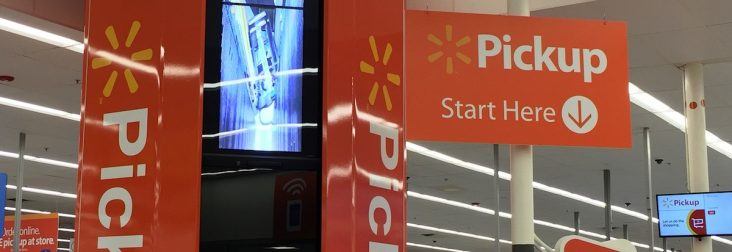Shopper evolution disrupts retail status quo; demographic sectors merging
by October 25, 2017 5:50 pm 762 views

There’s been a lot written about the Millennial generation and how these tech savvy shoppers are reshaping the retail sector today. But new research from Daymon Worldwide indicates a need to change how retailers view demographic sectors.
“We can’t just use age demographics today because research indicates multiple generations are using technology to enhance their shopping trips, and 49% say they want more engagement with retailers,” said Nicole Peranick, director of thought leadership-culinary at Daymon.
Stamford, Conn.-based Daymon provides consulting services in the retail industry.
During a webinar held Wednesday (Oct. 25) and hosted by Supermarket News, Peranick said there are three distinct shopping personas that have developed over the past few years and they transcend age and income demographics typically used in marketing research.
The vocal aficionado is the most active shopper. They like to browse, favor store brands, they are digital masters, shopping connoisseurs who are trend forward, they are foodies and also favor wellness. This demographic likes to buy local when possible and isn’t afraid to experiment with new products.
Peranick said vocal aficionados are across all age demographics, with 50% being between the ages of 35 and 54. One third are 18 to 24, with 17% being over 55. Compared to other countries the U.S. has far more older consumers in this category than every country but Japan (18%), she said. Canada has just 11% of its older consumers in this category and the United Kingdom has 12%.
Peranick said a vocal aficionado is the shopper all retailers want because of their zest for shopping and they also still find brick and mortar stores important.
The second shopper demographic is the balanced enthusiast who is engaged but also tempers passion with pragmatism and cautious spending, Peranick explained. Balanced enthusiasts are savvy shoppers but don’t make a fuss. They seldom share shopping ideas on social media as they are digital immigrants. The shoppers are grounded, appreciate store brand values and are more inward-focused, she said.
The struggling apathetic shopper, the third category, is constrained by finances or disengaged by circumstances of lower income or overall apathy about life in general. In this important demographic, Peranick said price is the main motivator when shopping. She described this group as un-digital, frugal and having limited funds and appetite for shopping.
She said retailers and brands must focus on the 56% of shoppers who are engaged as an aficionado or enthusiast because they expect to be courted. She said aficionados are more likely to buy on impulse and they visit stores more often than the other groups. When this group visits a store they expect a different experience, she adds.
Following is a breakdown of brick and mortar shopping destinations among vocal aficionados.
80%: Supermarkets
65%: Big Box
61%: Drug / Pharmacy
56%: Online
50%: Warehouse Club
40%: Convenience
37%: Discount
Dave Harvey, vice president of thought leadership for Daymon, provided data on five shopper insights which have shifted amid the retail evolution.
He said co-creation is the future of retail innovation and one of the metrics most important to aficionados and enthusiasts. Across the globe 55% of aficionados like giving a company feedback to improve shopping experiences, and 45% of the enthusiasts said so. More than half (51%) of aficionados are interested in helping a company design s new product or service, compared to 42% of enthusiasts.
In the U.S., 69% of aficionados and 52% of enthusiasts are interested in giving companies feedback they believe will improve future shopping experiences. Likewise, 64% of aficionados and 43% of enthusiasts in the U.S. are interested in helping companies design products or services.
Fresh is also important to aficionados, with 6 out of 10 loyal to a store where they know product is fresher. Harvey said retailers must think beyond fresh produce because there is a halo effect which they can take advantage of by broadening the scope of fresh to include more local products, fresh salad bar and freshly prepared foods, sustainably sourced foods as well as natural and organics. An in-store restaurant also indexed well with the vocal aficionados.
Harvey said all of the shopper demographics like private brands but they do for different reasons. He said the struggling apathetic is looking for low price value, whereas the balanced enthusiast also looks for value but not necessarily the lowest price. The aficionado is looking for retailers to provide more “Made for me” private brands rather than “Me too” options. He said private brands can be used to fill gaps in the market and retailers should look at this opportunity to differentiate private brands in some cases.
Conversation outside the store is also important to the aficionado group because they like to engage with the retailers they shop. Requesting product reviews are one way retailers are engaging shoppers in conservation post sale. Aficionados like to know the retailer reads and responds to the reviews it posts.
Harvey said retailers must have a mobile platform because 50% of global retail transactions are transacted by mobile. It’s not that high in the U.S. at 37%, but he said the stage is set for expansion, given so much of the world has already moved above 50%.
